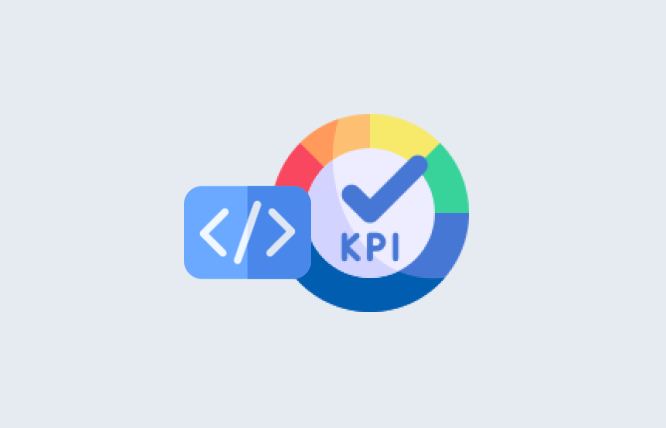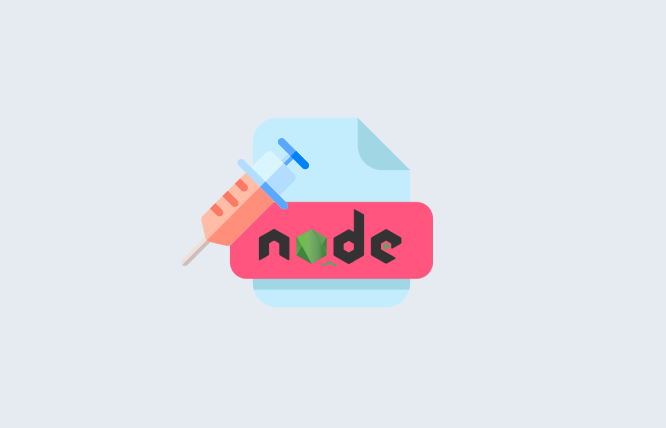This blog reveals 11 KPIs for Software Development. By monitoring these parameters, you will acquire important information to improve your development process, recognise obstacles, and ultimately release top-notch software quickly.
Were you aware that a staggering 69% of software projects do not meet their deadlines? In today’s competitive business environment, time is crucial, and any delays can lead to catastrophic outcomes.
In this blog, we will look at 11 KPIs for Software Development that can improve your software deployment strategy from slow to fast.
By effectively using these 11 KPIs (Key Performance Indicators), you can speed up your releases of , skillfully meet deadlines, and deliver high-quality software rapidly.business management solutions
KPIs For Software Development Lifecycle
Software development cycle time measures the average time taken to complete a specific development cycle, encompassing tasks like coding, testing, and deployment. A shorter development cycle time indicates a more efficient process, allowing for faster feature rollouts. By monitoring this KPI, teams can identify bottlenecks and optimise workflows to expedite development.
Formula
Development Cycle Time = Total Time Taken / Number of Completed Cycles
Tracking Methods
- Version control systems like Git can track timestamps for code commits and merges, allowing you to calculate the total time for each development cycle.
- Project management tools often offer built-in cycle time tracking features that automatically calculate this KPI based on user activity and task completion.
Lead Time for Changes
The lead time for changes is the average time period between when a change request is started and when it is fully implemented. A short lead time indicates how quickly a team can react to changes, which is important for adjusting to changing needs and integrating user input during the rollout phase.
Formula
Lead Time for Changes = Time from Change Request Initiation to Implementation
Tracking Methods
- Issue tracking systems like Jira or Bugzilla can be utilised to track the creation date and resolution date of change requests.
- Manual tracking can be implemented for smaller teams using spreadsheets or Kanban boards, but this can be time-consuming and prone to errors.
Change Failure Rate
The change failure rate measures the percentage of code changes that result in production defects. A high failure rate indicates areas within the development process that require improvement, such as testing practices or code review procedures. Tracking this KPI helps teams identify and rectify errors early when creating custom website solutions, ensuring smooth and successful rollouts.
Formula
Change Failure Rate = (Number of Failed Deployments / Total Number of Deployments) x 100
Tracking Methods
- Implement automated deployment pipelines that track deployment success or failure.
- Utilise monitoring tools to identify production issues introduced after deployments.
Mean Time to Restore (MTTR)
MTTR is the average duration of time needed to resolve a production problem and bring back normal operations. A quicker MTTR indicates how well a team can efficiently address unforeseen issues and reduce the amount of time systems are offline. By emphasising decreasing MTTR, teams can guarantee a more resilient and trustworthy software release process for users.
Formula
MTTR = Total Downtime for Resolved Issues / Number of Resolved Issues
Tracking Methods
- Leverage incident management tools that automatically track the time taken to resolve incidents.
- Maintain a log of production issues, including timestamps for identification and resolution.
Defect Escape Rate
The defect escape rate measures the percentage of defects that make it into production environments despite testing efforts. A low escape rate indicates a robust testing strategy and efficient quality control processes. Monitoring this KPI allows teams to identify areas where testing can be strengthened to prevent defects from slipping through the cracks and disrupting rollouts.
Formula
Defect Escape Rate = (Number of Defects in Production / Total Number of Identified Defects) x 100
Tracking Methods
- Integrate automated testing tools that record passed and failed tests, allowing you to calculate the number of defects identified during testing.
- Utilise defect tracking systems to record all identified defects, including those found in production.
Code Coverage
This measure shows the proportion of code that has been subjected to thorough testing. Having high code coverage, which involves a mix of end-to-end testing, unit testing, and integration testing, reduces the chances of bugs and defects appearing in the final product. This translates to a more stable and dependable software solution at launch.
Formula
Code Coverage (%) = (Executed Lines of Code / Total Lines of Code) * 100
Tracking method
Use code coverage tools. These tools instrument the code and track which lines are executed during testing. Popular tools include:
- For Java: Emma, JaCoCo
- For Python: Cobertura, pytest-cov
- For Javascript: IstanbulJS
Business Value Delivered
A fundamental principle of software development is aligning development efforts with tangible business goals. This KPI gauges the extent to which the software rollout delivers demonstrable value to the organisation. This could encompass increased revenue generation, cost savings, improved operational efficiency, or enhanced customer engagement.
Tracking method
Define specific metrics aligned with business goals. This could involve:
- Increased revenue: Monitor sales figures before and after rollout.
- Cost savings: Measure reduced operational costs due to the software.
- Improved efficiency: Track time saved on tasks due to the software.
- Enhanced customer engagement: Monitor user activity metrics.
Formula
This KPI is qualitative and relies on interpreting the chosen metrics in the context of business goals.
Team Collaboration
Software development thrives on collaboration. Team collaboration is one of the most crucial KPI for software company to assesses the effectiveness of teamwork within the development team. It could involve metrics such as communication frequency, knowledge sharing, and the efficiency of conflict resolution. Strong team collaboration fosters a cohesive development process and leads to seamless custom website design and development rollouts.
Tracking method
Use a combination of tools and practices:
- Project management tools: Track communication frequency through comments, chats, and meetings.
- Code review tools: Facilitate knowledge sharing and identify collaboration opportunities.
- Team surveys: Gather feedback on conflict resolution and overall collaboration effectiveness.
Customer Satisfaction Score (CSAT)
The ultimate validation of a successful software rollout lies in customer satisfaction. The CSAT directly captures customer sentiment through surveys or feedback forms. A high CSAT indicates that the software meets customer expectations and delivers a positive user experience. This translates to increased customer loyalty and advocacy, ultimately driving business growth.
Tracking method
Conduct surveys or gather feedback forms after launch.
- Use standardised CSAT scoring systems (1-5 stars, Likert scale).
- Include open-ended questions to understand specific satisfaction points or areas for improvement.
Formula
Calculate the average score based on the chosen CSAT scale.
Return on Investment (ROI)
Every software project entails an investment. This might be the measure KPI for software company which ensures the financial return generated by the software rollout compared to the initial investment. A positive ROI signifies that the software is delivering value and contributing to the organisation’s financial health. Tracking ROI allows businesses to assess the effectiveness of their software development efforts and make informed decisions about future investments.
Tracking method
Maintain clear records of development costs (personnel, tools, infrastructure) and software-related revenue or cost savings.
Formula
ROI (%) = ((Net Profit from Software) / (Total Investment)) * 100
Security Vulnerabilities
While proactive security testing helps eliminate vulnerabilities before launch, it’s crucial to remain vigilant post-release. This KPI continues to track the number of security vulnerabilities identified after the software has gone live. A low post-launch vulnerability count demonstrates the effectiveness of ongoing security monitoring and helps maintain user trust and data security.
Tracking method
Employ a blend of static and dynamic security testing tools:
- Static analysis tools: Identify potential vulnerabilities in the code itself.
- Dynamic analysis tools: Simulate attacks to uncover exploitable vulnerabilities.
Formula
Track the total number of vulnerabilities identified throughout the development lifecycle (pre-launch and post-launch).
Conclusion
To summarise, closely monitoring and enhancing these 11 KPIs during the software development process enables your team to achieve efficient deployments. This means that software solutions are delivered faster, with less risk, resulting in successful outcomes that add value to the business.
By adopting a strategy based on data and constantly striving to improve, software development teams can maintain a competitive advantage and drive their organisations towards success whether that be software development or Progressive Web & App development services.
Frequently Asked Questions
Key performance measures, or KPIs, are important for all software development projects, even distinctive ones. By keeping an eye on KPIs that are related to your project goals, you can learn a lot and find areas in which you can improve. This speeds up rollouts, lowers risks, and makes the experience better for users. KPIs like deployment frequency and code coverage can help speed up development, and security holes can help make sure the result is of good quality.
Yes! Many KPIs used in traditional software development also apply to PWA development (Progressive Web Apps). Core KPIs like code coverage and customer satisfaction (CSAT) remain crucial. However, PWAs offer unique features, so consider tracking additional KPIs related to performance and installability to optimise the user experience across devices.
Absolutely! Cross-platform development offers benefits like faster development and broader reach, but ensuring a consistent user experience across platforms is critical. KPIs like platform parity and device compatibility help your Cross-platform mobile app development company deliver high-quality solutions. These may be tracked alongside typical KPIs to guarantee a consistent user experience across devices and operating systems.
Have questions or feedback?
Get in touch with us and we‘l get back to you and help as soon as we can!





